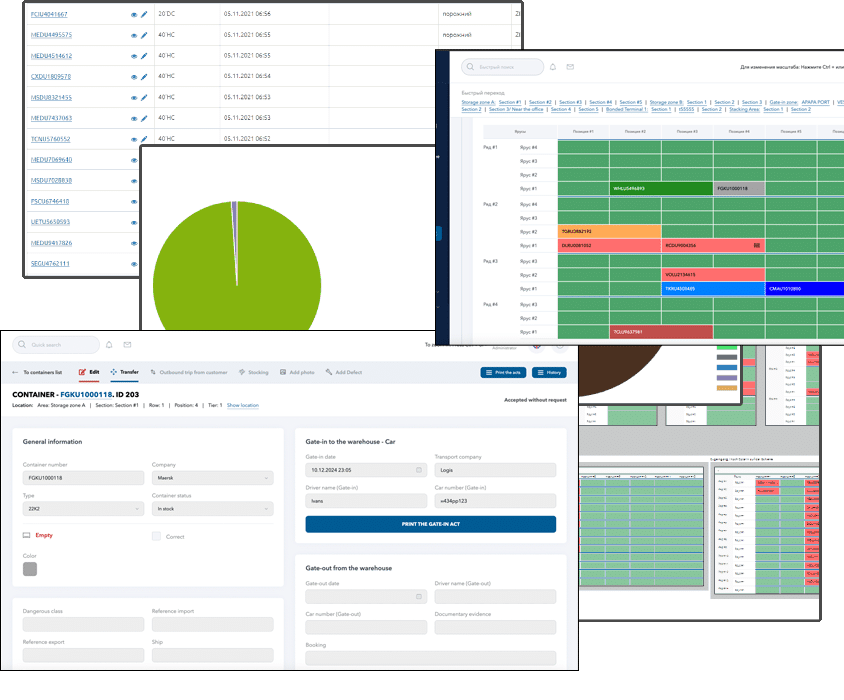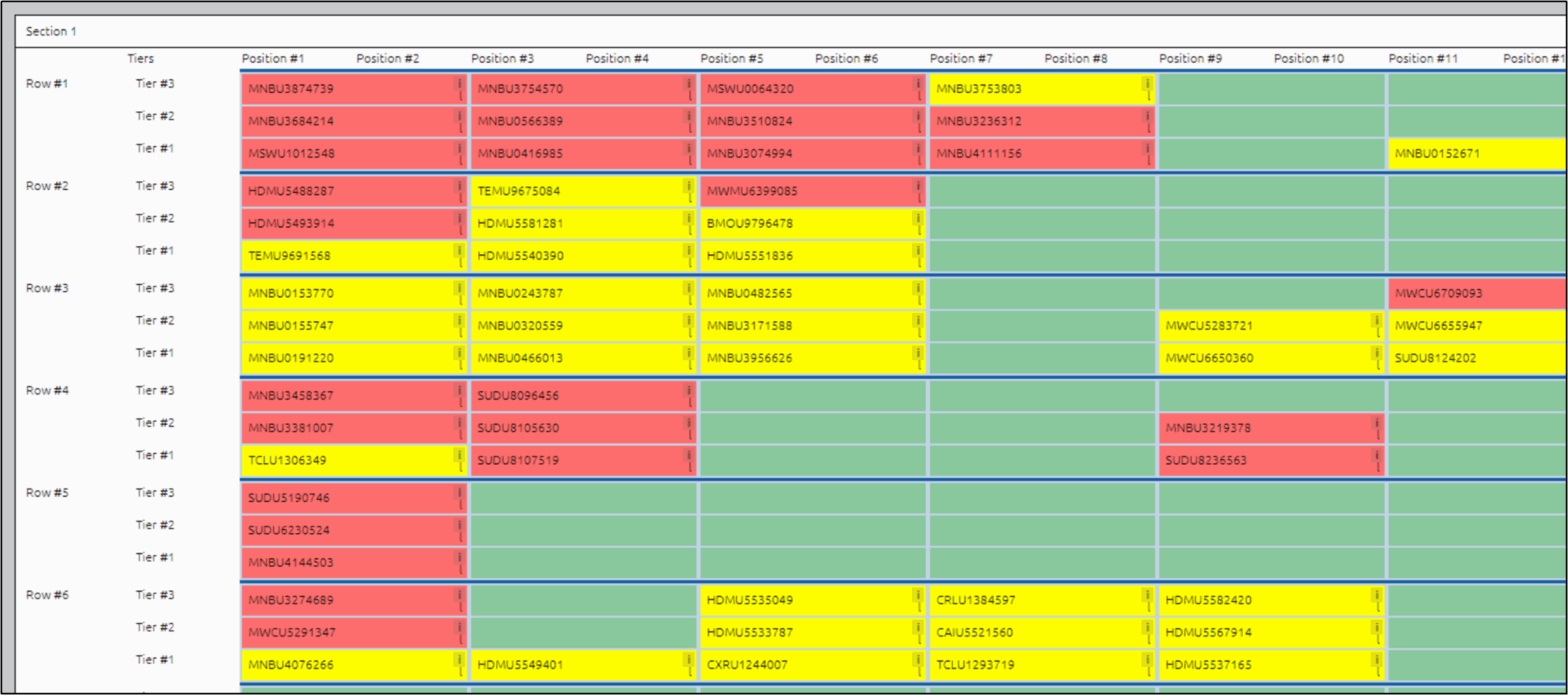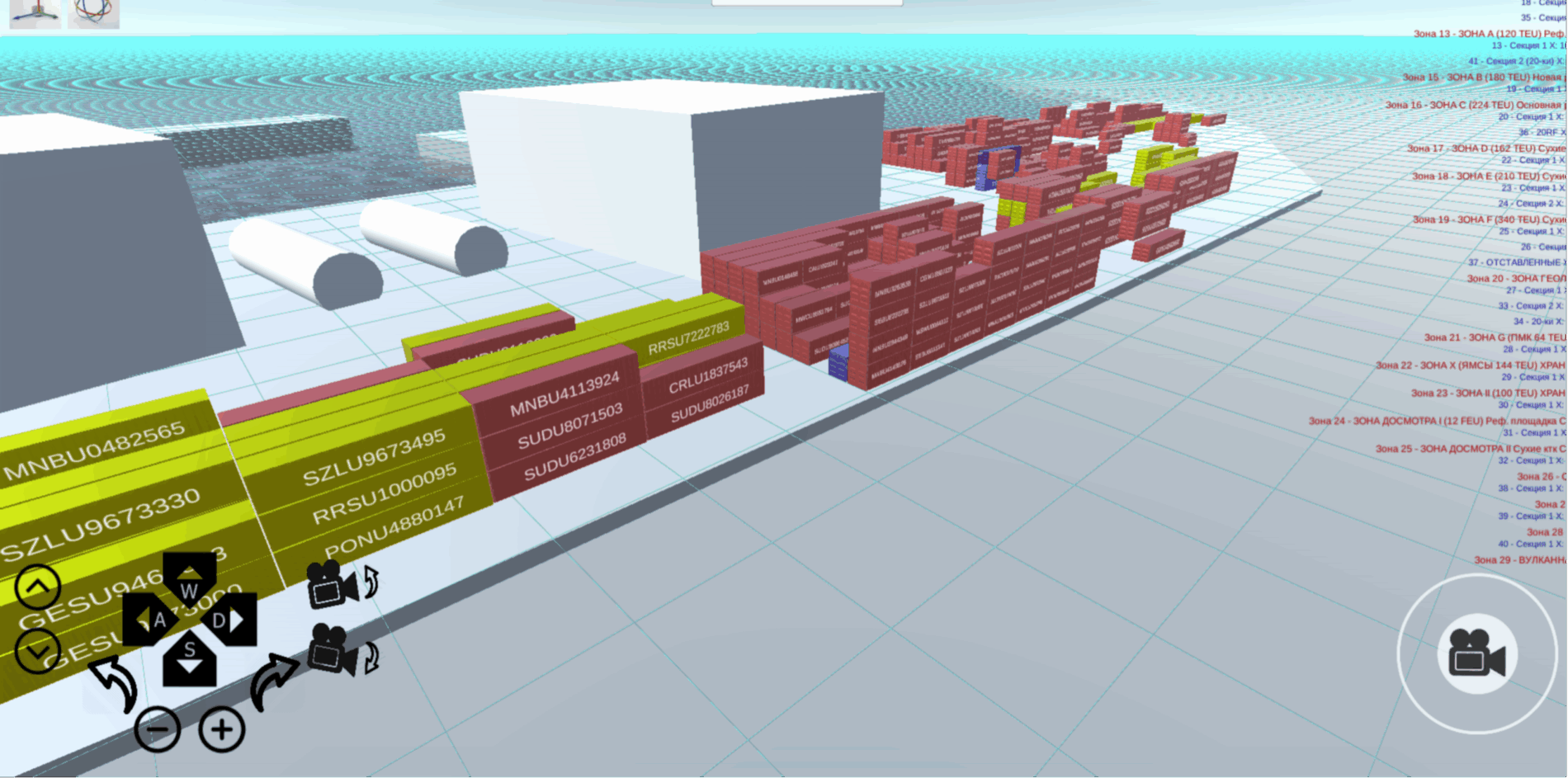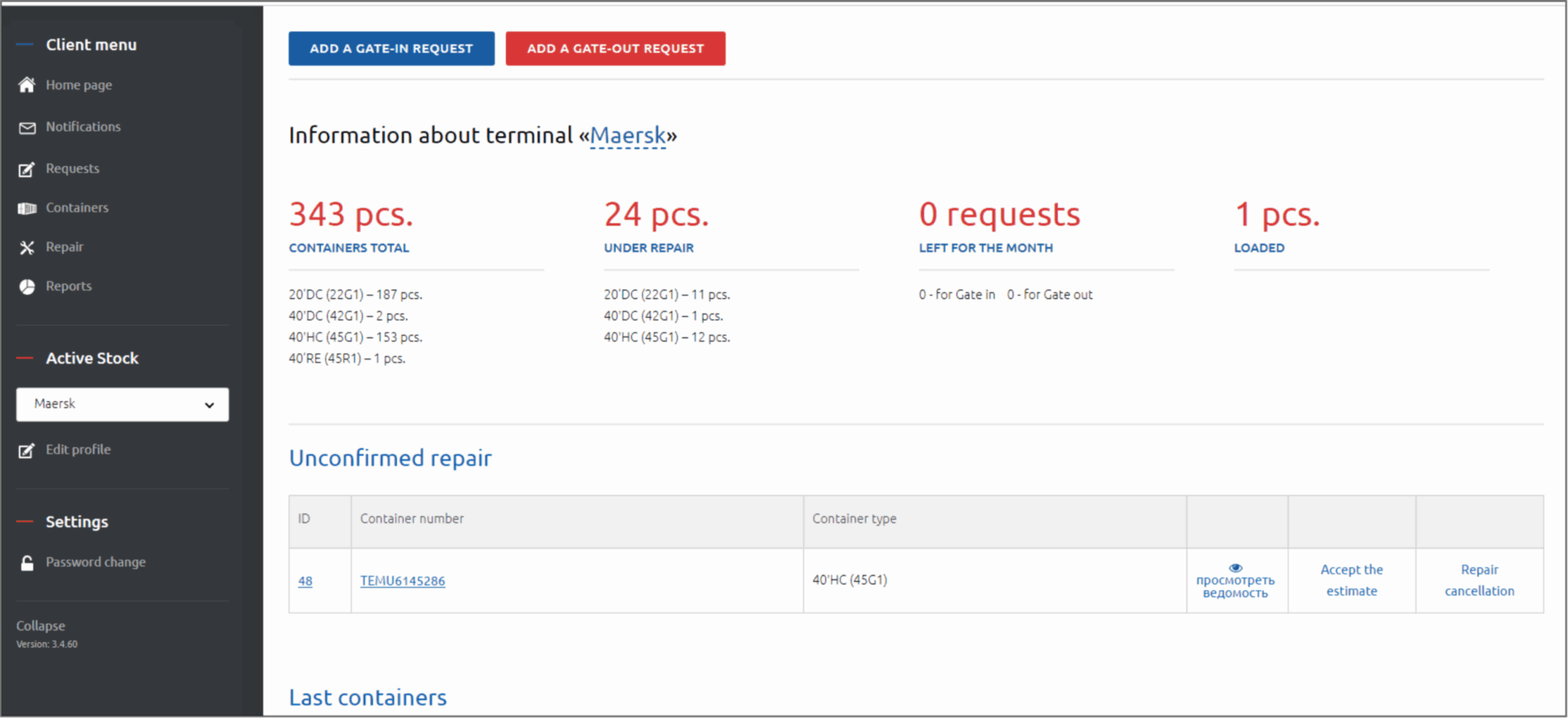Container dry ports—also known as inland container depots (ICDs) or dry terminals—are vital extensions of seaport infrastructure, located inland to reduce congestion at coastal gateways and accelerate cargo distribution. These facilities handle container receipt, storage, customs clearance, inspection, repair, and dispatch. As trade volumes rise and multimodal connectivity strengthens, operators are turning to intelligent Container Dry Port Software to manage increasingly complex logistics workflows.
This software platform enables real-time visibility, automates repetitive tasks, and integrates all operational units into a single digital environment. From gate-in/gate-out processing to yard planning, container tracking, invoicing, EDI, and customs interfacing, modern dry port solutions help reduce dwell times, minimize errors, and improve resource planning. Tailored for inland logistics hubs, these platforms transform traditional dry ports into connected, agile, and scalable digital terminals.
What Is a Dry Port? Key Differences from Coastal Terminals
A dry port is a customs-cleared inland terminal linked to a seaport via rail or road. It operates as a bonded facility, enabling import/export containers to be cleared and stored away from the seaport itself. Unlike traditional seaport terminals, dry ports serve as regional cargo hubs positioned closer to industrial and commercial zones.
| Aspect | Seaport Terminal | Dry Port / ICD |
|---|---|---|
| Location | Coastal / riverside | Inland, near economic zones |
| Transport Mode | Vessel, truck | Rail, truck (intermodal) |
| Customs Clearance | At port entry | At bonded ICD terminal |
| Key Role | Unload vessels, transfer to yard | Clear cargo, prep for final delivery |
Dry ports are especially critical in large, landlocked countries or congested maritime trade corridors. Their success depends on efficient rail access, bonded warehouse capability, and synchronized cargo flow with the main port—something that’s only possible through specialized software.
Challenges Faced by Dry Port Operators
Without digitization, dry port operations rely heavily on manual processes, disconnected spreadsheets, and delayed reporting. The following issues frequently impact performance:
- Slow gate processing: Manual data entry delays container check-in/out.
- Poor yard organization: Lack of stacking rules results in congestion and inefficiencies.
- No real-time visibility: Operators can’t track dwell time or locate containers on-demand.
- Billing errors: Manual service logs result in missed or delayed invoices.
- Customs delays: No EDI integration causes processing bottlenecks with bonded cargo.
Container Dry Port Software addresses these issues by delivering automated workflows, centralized dashboards, and direct connectivity with customs, carriers, and ERP systems.
Core Features of Container Dry Port Software
Modern Container Dry Port Software is designed to address the specific operational complexities of inland container terminals. These solutions bring automation, control, and visibility to every department—ensuring synchronized operations from the gate to the yard and billing office. Below are the essential modules that define a robust dry port management system:
| Module | Description | Operational Benefit |
|---|---|---|
| Gate Management | Automated entry/exit processing using RFID, QR, or manual check-in. Generates CODECO messages for container status. | Reduces truck queues and improves container visibility at entry points. |
| Yard Planning | Live stacking maps, container slotting logic by type, customer, or cargo status. | Maximizes yard utilization and minimizes container shifts. |
| Rail Scheduling | Pre-plan train arrivals, assign platform slots, and link containers with wagon numbers. | Enhances coordination with railway operators and reduces delays. |
| Customs & Bonded Zone Control | Track bonded containers, automate CUSCAR messaging, and store inspection reports with timestamps. | Ensures customs compliance and eliminates manual filing delays. |
| Repair & Inspection Workflow | Create digital repair lists, assign technicians, upload before/after photos. | Improves transparency and reduces disputes over damage claims. |
| Billing & Tariffs | Track services rendered (storage, repairs, inspections), apply tariffs, and auto-generate invoices. | Eliminates billing errors and speeds up revenue realization. |
| Client Portal | Real-time dashboard for forwarders, agents, and shippers with container status, service logs, and payment history. | Empowers customers and reduces support queries. |
All these modules operate through a unified platform that eliminates silos, reduces paperwork, and introduces traceability into every container movement. Facilities using such systems consistently report faster turnarounds, improved audit compliance, and higher customer satisfaction.
System Integration Capabilities
Integration is a cornerstone of high-performing dry port environments. Container Dry Port Software supports seamless connections with external and internal systems to ensure smooth data exchange and operational alignment. Key integration points include:
- EDI Messaging: Supports CODECO, COARRI, CUSCAR, and IFTMIN to interact with customs and carriers in real time.
- ERP & Financial Systems: Connects with platforms like SAP, Oracle, or QuickBooks to synchronize invoicing, customer balances, and financial reporting.
- Rail Operator Platforms: Share train schedules, confirm wagon/container matching, and manage loading plans electronically.
- Government Portals: Automatically push regulatory updates, inspection data, and customs entries.
- Client APIs: Allow freight forwarders and shipping lines to fetch container statuses, gate-in times, and billing documents securely.
By integrating across these layers, dry ports can eliminate redundancy, increase transparency, and meet the digital expectations of global supply chains.
Core Features of Container Dry Port Software
Modern Container Dry Port Software is designed to address the specific operational complexities of inland container terminals. These solutions bring automation, control, and visibility to every department—ensuring synchronized operations from the gate to the yard and billing office. Below are the essential modules that define a robust dry port management system:
| Module | Description | Operational Benefit |
|---|---|---|
| Gate Management | Automated entry/exit processing using RFID, QR, or manual check-in. Generates CODECO messages for container status. | Reduces truck queues and improves container visibility at entry points. |
| Yard Planning | Live stacking maps, container slotting logic by type, customer, or cargo status. | Maximizes yard utilization and minimizes container shifts. |
| Rail Scheduling | Pre-plan train arrivals, assign platform slots, and link containers with wagon numbers. | Enhances coordination with railway operators and reduces delays. |
| Customs & Bonded Zone Control | Track bonded containers, automate CUSCAR messaging, and store inspection reports with timestamps. | Ensures customs compliance and eliminates manual filing delays. |
| Repair & Inspection Workflow | Create digital repair lists, assign technicians, upload before/after photos. | Improves transparency and reduces disputes over damage claims. |
| Billing & Tariffs | Track services rendered (storage, repairs, inspections), apply tariffs, and auto-generate invoices. | Eliminates billing errors and speeds up revenue realization. |
| Client Portal | Real-time dashboard for forwarders, agents, and shippers with container status, service logs, and payment history. | Empowers customers and reduces support queries. |
All these modules operate through a unified platform that eliminates silos, reduces paperwork, and introduces traceability into every container movement. Facilities using such systems consistently report faster turnarounds, improved audit compliance, and higher customer satisfaction.
System Integration Capabilities
Integration is a cornerstone of high-performing dry port environments. Container Dry Port Software supports seamless connections with external and internal systems to ensure smooth data exchange and operational alignment. Key integration points include:
- EDI Messaging: Supports CODECO, COARRI, CUSCAR, and IFTMIN to interact with customs and carriers in real time.
- ERP & Financial Systems: Connects with platforms like SAP, Oracle, or QuickBooks to synchronize invoicing, customer balances, and financial reporting.
- Rail Operator Platforms: Share train schedules, confirm wagon/container matching, and manage loading plans electronically.
- Government Portals: Automatically push regulatory updates, inspection data, and customs entries.
- Client APIs: Allow freight forwarders and shipping lines to fetch container statuses, gate-in times, and billing documents securely.
By integrating across these layers, dry ports can eliminate redundancy, increase transparency, and meet the digital expectations of global supply chains.
Benefits of Implementing Dry Port Software
Deploying container dry port software results in significant operational improvements across all departments. The benefits span cost reduction, customer satisfaction, compliance, and workforce productivity:
- Faster Turnaround: Automated gate operations and yard control reduce container cycle time.
- Better Space Utilization: Yard visualization enables smart stacking decisions and minimizes container shifting.
- Stronger Compliance: Real-time EDI and customs messaging reduce the risk of fines and cargo hold-ups.
- Improved Revenue Tracking: Billing engine captures all services and eliminates undercharging.
- Customer Transparency: Clients gain access to container data, photos, and invoice status in real-time.
These improvements enable dry port operators to remain competitive, scalable, and fully aligned with global logistics standards.
Use Cases: Who Benefits from Dry Port Software?
| Stakeholder | Benefit |
|---|---|
| Terminal Operator | Full operational control, faster gate processing, real-time reports |
| Customs Agency | Automatic EDI updates, inspection records, dwell time tracking |
| Freight Forwarder | Online container tracking, estimated delivery windows, payment monitoring |
| Rail Logistics Company | Schedule alignment, loading plans, terminal-to-wagon visibility |
| Finance Department | Automated invoicing, digital audit trail, reduced receivables cycle |
Whether privately operated or state-run, inland dry ports stand to gain enormous efficiency and transparency benefits by adopting a cloud-based container terminal software platform.
Core Features of Container Dry Port Software
Modern Container Dry Port Software is designed to address the specific operational complexities of inland container terminals. These solutions bring automation, control, and visibility to every department—ensuring synchronized operations from the gate to the yard and billing office. Below are the essential modules that define a robust dry port management system:
| Module | Description | Operational Benefit |
|---|---|---|
| Gate Management | Automated entry/exit processing using RFID, QR, or manual check-in. Generates CODECO messages for container status. | Reduces truck queues and improves container visibility at entry points. |
| Yard Planning | Live stacking maps, container slotting logic by type, customer, or cargo status. | Maximizes yard utilization and minimizes container shifts. |
| Rail Scheduling | Pre-plan train arrivals, assign platform slots, and link containers with wagon numbers. | Enhances coordination with railway operators and reduces delays. |
| Customs & Bonded Zone Control | Track bonded containers, automate CUSCAR messaging, and store inspection reports with timestamps. | Ensures customs compliance and eliminates manual filing delays. |
| Repair & Inspection Workflow | Create digital repair lists, assign technicians, upload before/after photos. | Improves transparency and reduces disputes over damage claims. |
| Billing & Tariffs | Track services rendered (storage, repairs, inspections), apply tariffs, and auto-generate invoices. | Eliminates billing errors and speeds up revenue realization. |
| Client Portal | Real-time dashboard for forwarders, agents, and shippers with container status, service logs, and payment history. | Empowers customers and reduces support queries. |
All these modules operate through a unified platform that eliminates silos, reduces paperwork, and introduces traceability into every container movement. Facilities using such systems consistently report faster turnarounds, improved audit compliance, and higher customer satisfaction.
System Integration Capabilities
Integration is a cornerstone of high-performing dry port environments. Container Dry Port Software supports seamless connections with external and internal systems to ensure smooth data exchange and operational alignment. Key integration points include:
- EDI Messaging: Supports CODECO, COARRI, CUSCAR, and IFTMIN to interact with customs and carriers in real time.
- ERP & Financial Systems: Connects with platforms like SAP, Oracle, or QuickBooks to synchronize invoicing, customer balances, and financial reporting.
- Rail Operator Platforms: Share train schedules, confirm wagon/container matching, and manage loading plans electronically.
- Government Portals: Automatically push regulatory updates, inspection data, and customs entries.
- Client APIs: Allow freight forwarders and shipping lines to fetch container statuses, gate-in times, and billing documents securely.
By integrating across these layers, dry ports can eliminate redundancy, increase transparency, and meet the digital expectations of global supply chains.
Benefits of Implementing Dry Port Software
Deploying container dry port software results in significant operational improvements across all departments. The benefits span cost reduction, customer satisfaction, compliance, and workforce productivity:
- Faster Turnaround: Automated gate operations and yard control reduce container cycle time.
- Better Space Utilization: Yard visualization enables smart stacking decisions and minimizes container shifting.
- Stronger Compliance: Real-time EDI and customs messaging reduce the risk of fines and cargo hold-ups.
- Improved Revenue Tracking: Billing engine captures all services and eliminates undercharging.
- Customer Transparency: Clients gain access to container data, photos, and invoice status in real-time.
These improvements enable dry port operators to remain competitive, scalable, and fully aligned with global logistics standards.
Use Cases: Who Benefits from Dry Port Software?
| Stakeholder | Benefit |
|---|---|
| Terminal Operator | Full operational control, faster gate processing, real-time reports |
| Customs Agency | Automatic EDI updates, inspection records, dwell time tracking |
| Freight Forwarder | Online container tracking, estimated delivery windows, payment monitoring |
| Rail Logistics Company | Schedule alignment, loading plans, terminal-to-wagon visibility |
| Finance Department | Automated invoicing, digital audit trail, reduced receivables cycle |
Whether privately operated or state-run, inland dry ports stand to gain enormous efficiency and transparency benefits by adopting a cloud-based container terminal software platform.
Implementation Timeline and Deployment Strategy
Deploying a dry port software system is typically executed in defined stages to minimize disruption and ensure data accuracy. Below is a standard rollout roadmap:
| Phase | Key Actions |
|---|---|
| Phase 1 — Analysis | Map current workflows, define goals, identify integration points |
| Phase 2 — Data Preparation | Gather container records, client data, service tariffs, yard layout |
| Phase 3 — System Configuration | Customize features, user roles, tariffs, EDI, billing modules |
| Phase 4 — Staff Training | Hands-on instruction, simulation mode, user guides |
| Phase 5 — Go-Live | Transition to production with support and issue tracking |
This roadmap ensures a smooth transition, empowers staff, and guarantees continuity during software adoption.
Get Started with Container Dry Port Software
Modern logistics requires connected, agile, and scalable terminal operations—even far from seaports. With our cloud-based Container Dry Port Software, you gain access to a fully integrated platform that digitizes operations across gate, yard, billing, and rail.
- Real-time yard monitoring
- Paperless customs and billing
- Live dashboards for clients and staff
- End-to-end EDI and API support
Book a demo today or request trial access to our sandbox terminal to explore how this solution can transform your inland terminal into a high-performing, digital logistics hub.
Error: Contact form not found.







